The Iris Nebula, also known as NGC 7023, is a bright reflection nebula and in the constellation Cepheus. NGC 7023 is actually the cluster within the nebula, LBN 487, and the nebula is lit by a magnitude +7 star, SAO 19158. It lies 1,300 light-years away and is six light-years across.
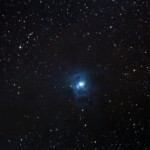
NGC 7023, Iris nebula
The Iris Nebula, also known as NGC 7023, is a bright reflection nebula and in the constellation Cepheus. NGC 7023 is actually the cluster within the nebula, LBN 487, and the nebula is lit by a magnitude +7 star, SAO 19158. It lies 1,300 light-years away and is six light-years across.
Photographed with APO107 refractor telescope and Atik 360EX monochrome CCD camera in Åva, September 2019. First use of my new EQ6R mount. Exposure was 30 min RGB and 12 min L.
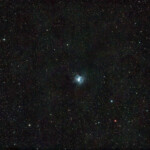
NGC 7023, Iris Nebula
Photographed with the APO 94 mm refractor telescope and ASI 2600MC CMOS color camera in Stuvsta, October 11th 2024. This was the second target where I used the new AM5 mount from ZWO ASI. Exposure was 18 * 3 min with IDAS LPS D2 light pollution filter. Postprocessing in Pixinsight.
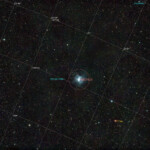
NGC 7023, Iris Nebula
Photographed with the APO 94 mm refractor telescope and ASI 2600MC CMOS color camera in Stuvsta, October 11th 2024. This was the second target where I used the new AM5 mount from ZWO ASI. Exposure was 18 * 3 min with IDAS LPS D2 light pollution filter. Postprocessing in Pixinsight.
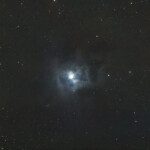
NGC 7023, Iris Nebula
NGC 7023, the Iris Nebula, photographed with the RC8 reflector telescope and the ASI 2600MC CMOS color camera in Stuvsta, December 10th, 2024. Exposure was 30 * 3 min with IDAS HEUIB filter and I used the new AM5 mount from ZWO for the first time with this telescope. Post-processed in Pixinsight and Photoshop.
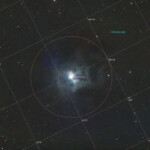
NGC 7023, Iris Nebula
NGC 7023, the Iris Nebula, photographed with the RC8 reflector telescope and the ASI 2600MC CMOS color camera in Stuvsta, December 10th, 2024. Exposure was 30 * 3 min with IDAS HEUIB filter and I used the new AM5 mount from ZWO for the first time with this telescope. Post-processed in Pixinsight and Photoshop.